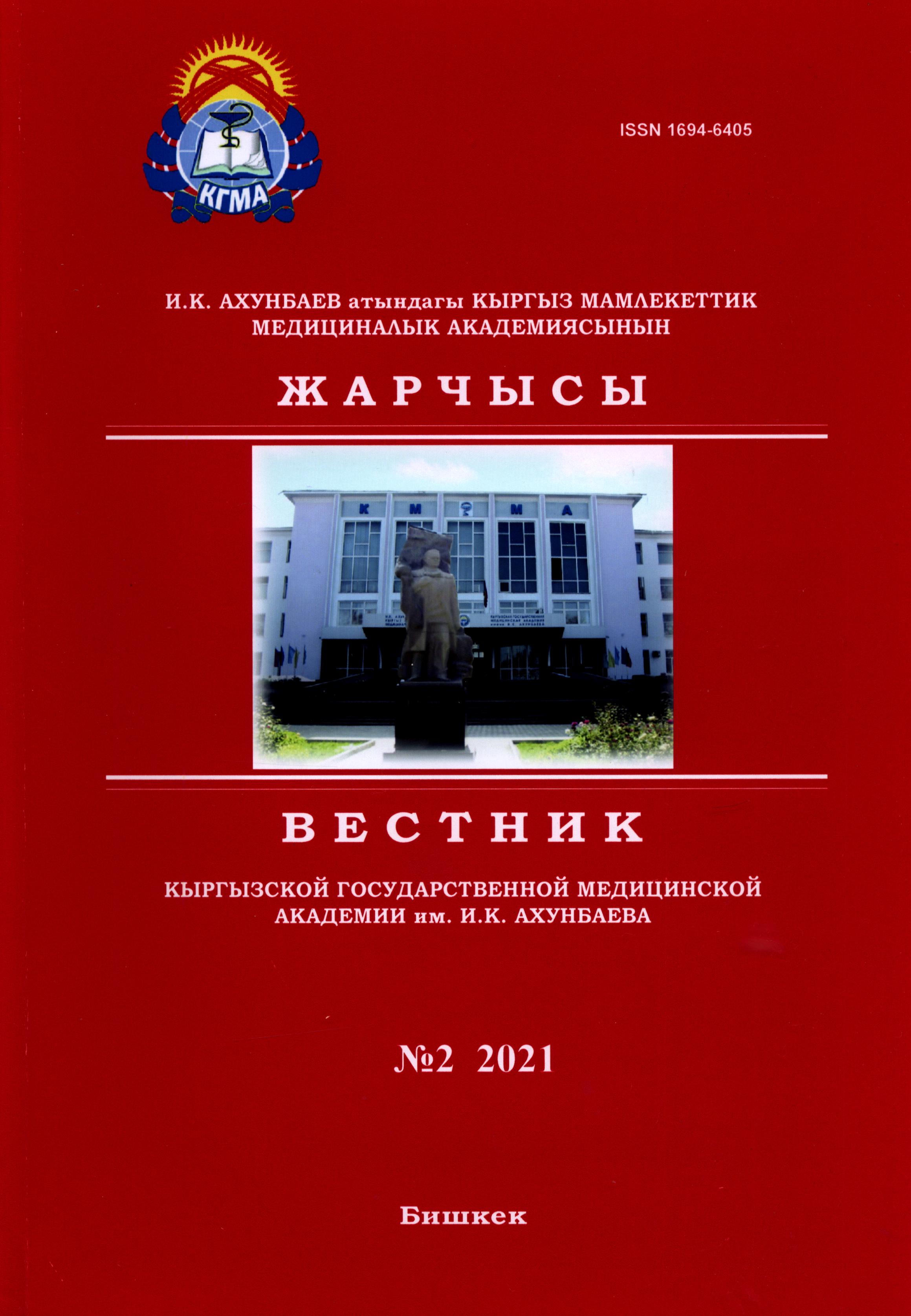ЭПИДЕМИОЛОГИЯ ОСТРЫХ ЭКЗОГЕННЫХ ОТРАВЛЕНИЙ У ДЕТЕЙ РЯЗАНСКОЙ ОБЛАСТИ
DOI:
https://doi.org/10.54890/.v2i2.114Аннотация
Цель. Изучение структуры и динамики острых экзогенных отравлений у детей Рязанской области за период 2013–2017 гг. Материалы и методы. Проведено ретроспективное исследование 548 случаев острых отравлений у детей Рязанской области за период с 2013 по 2017 гг.
Результаты. Наиболее часто острые экзогенные отравления фиксировались у подростков (45,1%) и детей раннего возраста (35,6 %). Среди причин отравлений наиболее часто выступали медикаментозные препараты (45,1 %), неуточненные вещества (33,6 %), алкоголь и его суррогаты (14,6 %). У детей подросткового возраста преобладали отравления алкоголем и курительными смесями. Независимо от возраста, доминировали интоксикации медикаментозными препаратами, среди которых превалировали отравления неуточненными лекарственными веществами (33,6%), назальными деконгестантами (17,8%), седативными и снотворными (13,3%), психотропными (6,4%), гипотензивными (6,8%) и нестероидными противовоспалительными средствами (НПВС) (6,8%). В интенсивной терапии нуждалось 230 детей, среди которых доминировали отравления в результате несчастного случая (60,3 %), с целью суицида (34,3%). Выводы. В структуре острых экзогенных отравлений у детей Рязанской области за период 2013-2017 гг. преобладали интоксикации лекарственными препаратами, неуточненными веществами, алкоголем и его суррогатами. Чаще отравления встречались у детей раннего возраста и подростков. В динамике отмечено снижение количества случаев отравлений у детей раннего возраста и увеличение их числа среди подростков. Отмечен рост числа случаев алкогольных интоксикаций у подростков в 2,5 раза за период наблюдения.
Ключевые слова:
острые экзогенные отравления, дети, подростки, интоксикация.Библиографические ссылки
1. Titidezh V, Arefi M, Taghaddosinejad F. Behnoush B, Pour SA, Mahboobi M. Epidemiologic profile of deaths due to drug and chemical poisoning in patients referred to Baharloo Hospital of Tehran, 2011 to 2014. J Forensic Leg Med. 2019;64:31-33. doi: 10.1016/j.jflm.2019.02.009. Epub 2019 Feb 1.
2. Azab SM, Hirshon JM, Hayes BD, El-Setouhy M, Smith GS, Sakr ML et al. Epidemiology of acute poisoning in children presenting to the poisoning treatment center at Ain Shams University in Cairo, Egypt, 2009-2013. ClinToxicol (Phila). 2016;54(1):20-6. doi: 10.3109/15563650.2015.1112014.
3. Abhulimhen-Iyoha BI, Israel-Aina YT. Pattern of Accidental Childhood Poisoning at the Children Emergency Room of the University of Benin Teaching Hospital, Benin City, Nigeria. West Afr J Med. 2018;35(2):85-89.
4. Баранов А.А., Багненко С.Ф., Намазова-Баранова Л.С., Александрович Ю.С., Пшениснов К.В., Алексеева Е. А. и др. Клинические рекомендации по оказанию скороʹ медицинскоʹ помощи при острых отравлениях у детеʹ. Педиатрическая фармакология. 2015;12(6):657-66. doi: 10.15690/pf.v12i6.1489 [Baranov AA, Bagnenko SF, Namazova-Baranova LS, Alexandrovich YuS, Pshenisnov KV, Alexeyeva EA et al. Clinical Recommendations on Emergency Medical Care Rendering to Children with Acute Intoxication. Pediatric pharmacology. 2015;12(6):657-66. (In Russ.).]
5. Землянова Е.В. Анализ статистики смертности детеʹ̆ от несчастных случаев, отравлениʹ и травм с 2000 г. по 2008 г. Социальные аспекты здоровья населения. 2009;12(4):6. [Zemlyanova EV. Analysis of statistics of mortality from accidents, poisonings and traumas in children. Social aspects of population health. 2009;12(4):6. (In Russ.).]
6. Лужников Е.А. Педиатрическая клиническая токсикология. Ростов н/Д.: Феникс; 2013. 253 с. [Luzhnikov EA. Pediatricheskaya klinicheskaya toksikologiya. Rostov n/D.: Feniks; 2013. 253 p. (In Russ.).]
7. Макарова И.В. Клиническая токсикология детеʹ и подростков. Москва: Медицина; 1999. 400 с. [Makarova IV. Klinicheskaya toksikologiya detey i podrostkov. Moskva: Meditsina; 1999. 400 p. (In Russ.).]
8. Alvarez-Pitti J, Rodrнguez-Varela A, Morales-Carpi C, Lurbe E, Estaс L. Naphazoline intoxication in children. Eur J Pediatr. 2006;165(11):815-6.
9. Павленко Т.Н., Головко О.В., Кацова Г.Б., Малеева Н.П. Динамика и структура острых отравлениʹ у детеʹ̆ г. Оренбурга. Теоретические и прикладные аспекты современноʹ̆ науки. 2014;5–2:67-72. [Pavlenko TN, Golovko OV, Kacova GB, Maleeva NP. Dinamika i struktura ostryh otravleniʬ u deteʬ g. Orenburga. Teoreticheskie i prikladnye aspekty sovremennŏj nauki. 2014;5–2:67-72. (In Russ.).]
10. Гладченко А.Ю., Сердюков А.Г., Гладченко Ю.Л. Острые химические отравления детеʹ Астраханскоʹ области медико-социальная проблема. Сибирское медицинское обозрение. 2010;1:57-60. [Gladchenco AYu, Serdyucov AG, Gladchenco YuL. Acute chemical intoxication in children from Astrakhan region – medical and social problem. Siberian Medical Review. 2010;1:57-60. (In Russ.).]
11. Белых Н.А. Йодныʹ дефицит и интеллект ребенка. Механизмы негативного влияния и пути профилактики. Наука молодых (Eruditio Juvenium). 2017;2:251-64. [Belykh NA. Iodine deficiency and neurodevelopment in infants: negative influence and methods of iodine prophylaxis. Science of the young (Eruditio Juvenium). 2017;2:251-64. (In Russ.).]
12. Дмитриева Н.В., Гудков Р.А. Динамика и тенденции детскоʹ заболеваемости в Рязанскоʹ области за 1990-99 годы. Рос. медико-биол. вестн. им. акад. И.П. Павлова. 2001;3-4:32-6. [Dmitrieva NV, Gudkov RA. Dinamika i tendencii detskoj zabolevaemosti v Ryazanskoj oblasti za 1990-99 gody. Ros. mediko-biol. vestn. im. akad. I.P. Pavlova. 2001;3-4:32-6. (In Russ.).].
13. Huang H, Li B, Chen Y, Yuan Y, Xiong P, Zhang W-D, Fu L-N et al. Etiology and risk factors for childhood unintentional injuries: a retrospective analysis of data at a pediatric intensive care unit. Zhongguo Dang Dai ErKeZaZhi. 2019;21(4):323-326. doi: 10.7499/j.issn.1008-8830.2019.04.004.
14. Disfani HF, Kamandi M., Mousavi SM, Sadrzadeh SM, Farzaneh R, Doolabi N et al. Risk factors contributing to the incidence and mortality of acute childhood poisoning in emergency department patients in Iran: a hospital-based casecontrol study. Epidemiol Health. 2019;41:e2019016. doi: 10.4178/epih.e2019016. Epub 2019 Apr 23.







